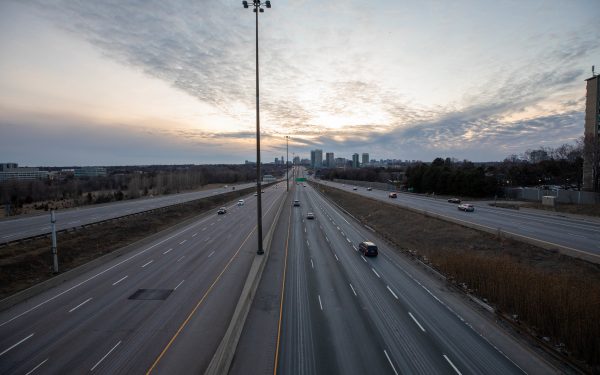While Prime Minister Justin Trudeau asks Canadians to “stay home if you can,” I start to ponder how and when this notion became so foreign to us. When did we become so mobile that we barely spent any time at home?
I commute to my downtown Toronto office twice a day – a total of 2.5 hours, or 12.5 hours per week. Like most of us, I spend a minimum of 40 hours per week in an office building, away from my home. In that office, I focus on work-related tasks only. I buy lunch from a food vendor in a take away food concourse on most days, discarding the leftovers that were served mostly in non recyclable, throw-away containers. I spend my short weekends doing all of my home-related tasks and then wonder why I’m so tired on Monday returning to the office.
My pets are home alone. My daughter spends her days in a school building. My partner commutes by car to another office building. Our uninhabited homes are heated and cooled whether we are in them or not. Each of our respective daytime buildings are in separate locations. They are each heated and cooled separately, using natural gas and electricity with a substantial carbon footprint. Many of us travel for work or leisure as if it’s a given. Even if there is a twinge of guilt around the carbon cost of flying, we go ahead and do it anyway, at least twice a year for most middle-income families.
We became truly global during the 2000s with the growth of the internet, broadband networks and then social media. In the 2000s, I still had a landline while Linked-In, Facebook and Twitter were still nascent platforms.
Climate change and global warming had become household phrases. There was lots of talk about sustainability and sustainable living, and the need for more telework to reduce our ecological footprint. But for some reason, these approaches didn’t really take hold in many Canadian workplaces.
Workplace culture hasn’t kept abreast of technological changes that allow virtual work. Maybe that’s because we are social beings and we need to be together daily. Or maybe we aren’t seeing the climate problem with enough clarity yet. We have invested a lot of effort in making buildings more energy efficient, and we’re seeing some success. Emissions from new buildings are on a steadily downward trend. But how much energy and C02 could be saved by just staying home?
Consider that a typical 747 aircraft emits about 90 kg of C02 per hour. Aircrafts contribute between 4 and 5% of global C02 emissions, and rising steeply over the next 30 years. Research from the International Council on Clean Transportation found that emissions from global air travel may be increasing more than 1.5 times as fast as the U.N. estimates . Cars are the second highest polluting form of transport, contributing to approximately 15% of global emissions.
The large source of global emissions, about 25%, comes from electricity and heat production that uses carbon intensive fuel sources such as natural gas and coal, mainly for buildings. Waste-related greenhouse gas emissions, which in large part comes from decomposing food, accounts for around 8%. Food waste in particular converts to harmful methane gas emissions.
On the one hand, we see companies like Google employing smart building technologies that automatically or remotely control how much energy or water they use. Electrifying the transport system and self-driving smart cars are likewise intended as new ways to accelerate the use of technology to aide in the climate crises. All are important ideas to consider, but it is interesting to track how we might reduce greenhouse gas emissions simply by becoming less mobile.
In Toronto, buildings account for over 50% of city-wide C02 emissions, followed by transport (38%) and waste (10%). Toronto council last year declared a climate emergency and City staff are busily looking for better, faster ways to cut emissions and reduce costs.
For example, if we reduced the number of office locations we needed by half, funds could be redirected to other priorities, such as housing. We tend to develop GHG reduction strategies by focussing on specific sectors and individuals’ behavioral changes. But to address the climate crisis, we need integrated sustainability approaches that evaluate multiple impacts from a common solution and that offer the largest potential gains in the shortest amount of time.
What if we all stayed at home much more. What would that mean for the planet? Carbon footprint per capita is at its highest in developed countries, like Canada, the U.S. and Australia, at approximately 15 metric tonnes per person.
During the Covid-19 crisis, we are learning that our governments can make radical changes and will ask the public to follow new rules of behaviour when there are immediate public safety threats. What if these Covid19 directed actions could be put to work helping to solve climate change? If we can use virtual technology in highly efficient ways, we may be able to leap forward and get much closer to what scientists have been asking us to do for years in order to stay below the 1.5 degree warming threshold. Staying at home is exactly the kind of radical reset we need to address the times we live in.
Lisa King, M.A., is a sustainability practitioner, urban planner and Canada Clean 50 award recipient for contributions to clean capitalism. She lives in the City of Toronto.




